Abstract
Polycationic polymers have been noted for their effects in promoting cell adhesion to various surfaces, but previous studies have failed to describe a mechanism dealing with this type of adhesion. In the present study, three polycationic polymers (chitosan, poly-L-lysine, and lysozyme) were tested for their effects on microbial hydrophobicity, as determined by adhesion to hydrocarbon and polystyrene. Test strains (Escherichia coli, Candida albicans, and a nonhydrophobic mutant, MR-481, derived from Acinetobacter calcoaceticus RAG-1) were vortexed with hexadecane in the presence of the various polycations, and the extent of adhesion was measured turbidimetrically. Adhesion of all three test strains rose from near zero values to over 90% in the presence of low concentrations of chitosan (125 to 250 micrograms/ml). Adhesion occurred by adsorption of chitosan directly to the cell surface, since E. coli cells preincubated in the presence of the polymer were highly adherent, whereas hexadecane droplets pretreated with chitosan were subsequently unable to bind untreated cells. Inorganic cations (Na+, Mg2+) inhibited the chitosan-mediated adhesion of E. coli to hexadecane, presumably by interfering with the electrostatic interactions responsible for adsorption of the polymer to the bacterial surface. Chitosan similarly promoted E. coli adhesion to polystyrene at concentrations slightly higher than those which mediated adhesion to hexadecane. Poly-L-lysine also promoted microbial adhesion to hexadecane, although at concentrations somewhat higher than those observed for chitosan. In order to study the effect of the cationic protein lysozyme, adhesion was studied at 0 degree C (to prevent enzymatic activity), using n-octane as the test hydrocarbon. Adhesion of E. coli increased by 70% in the presence of 80 micrograms of lysozyme per ml. When the negatively charged carboxylate residues on the E. coli cell surface were substituted for positively charged ammonium groups, the resulting cells became highly hydrophobic, even in the absence of polycations. The observed "hydrophobicity" of the microbial cells in the presence of polycations is thus probably due to a loss of surface electronegativity. The data suggest that enhancement of hydrophobicity by polycationic polymers is a general phenomenon.
Full text
PDF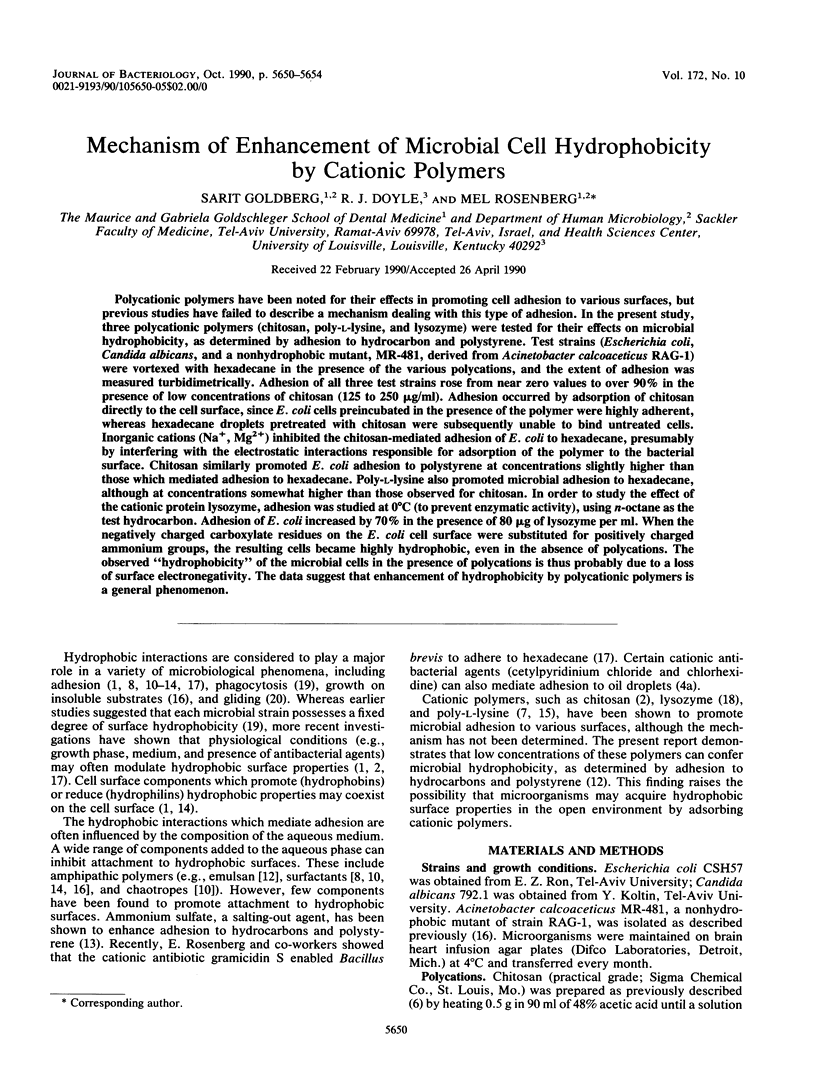
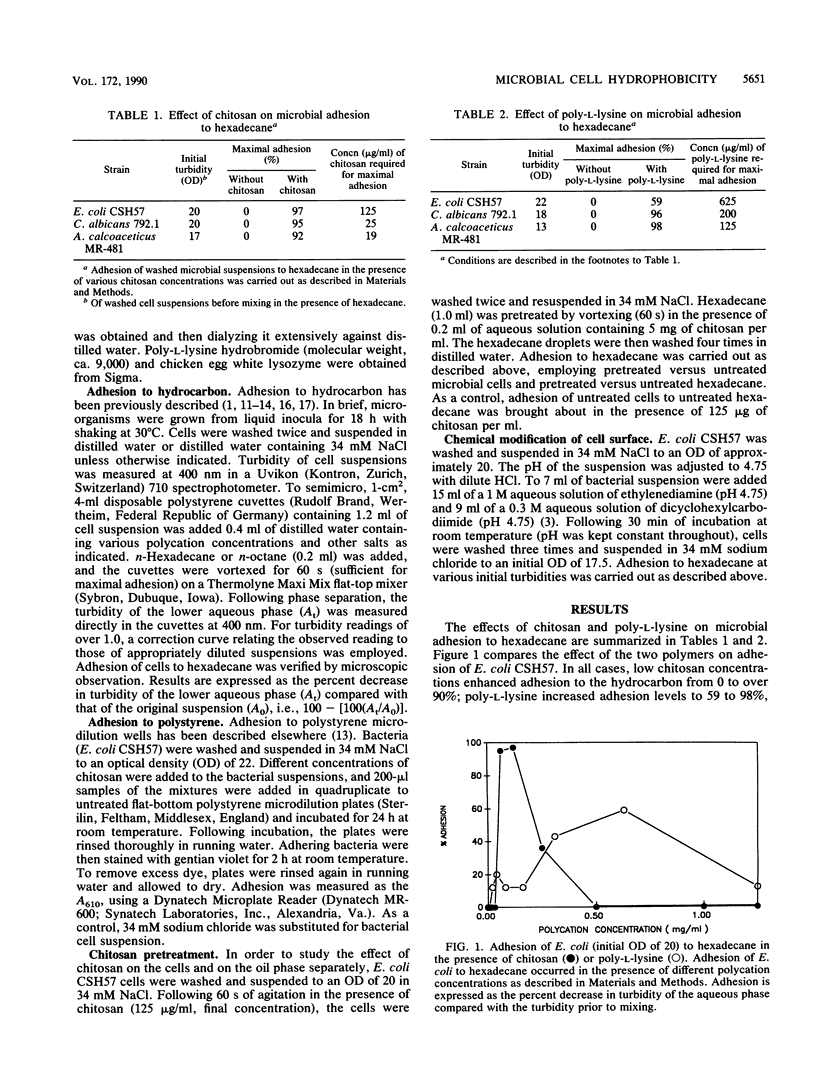
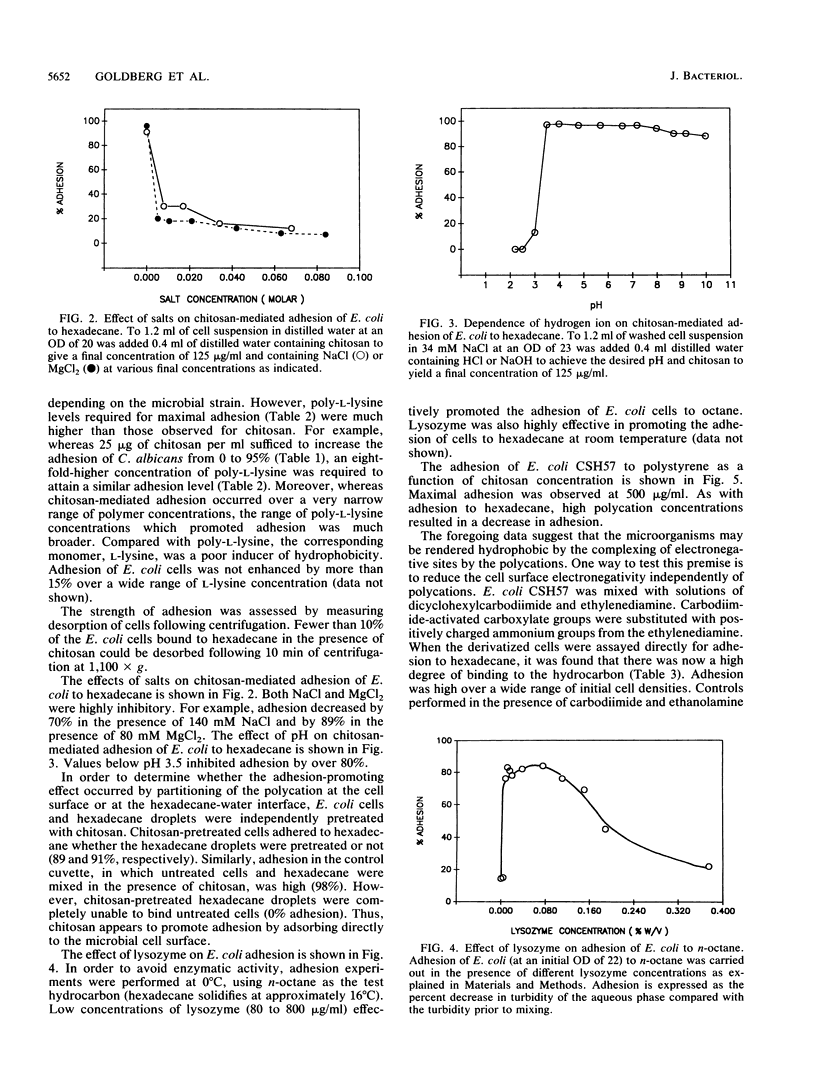
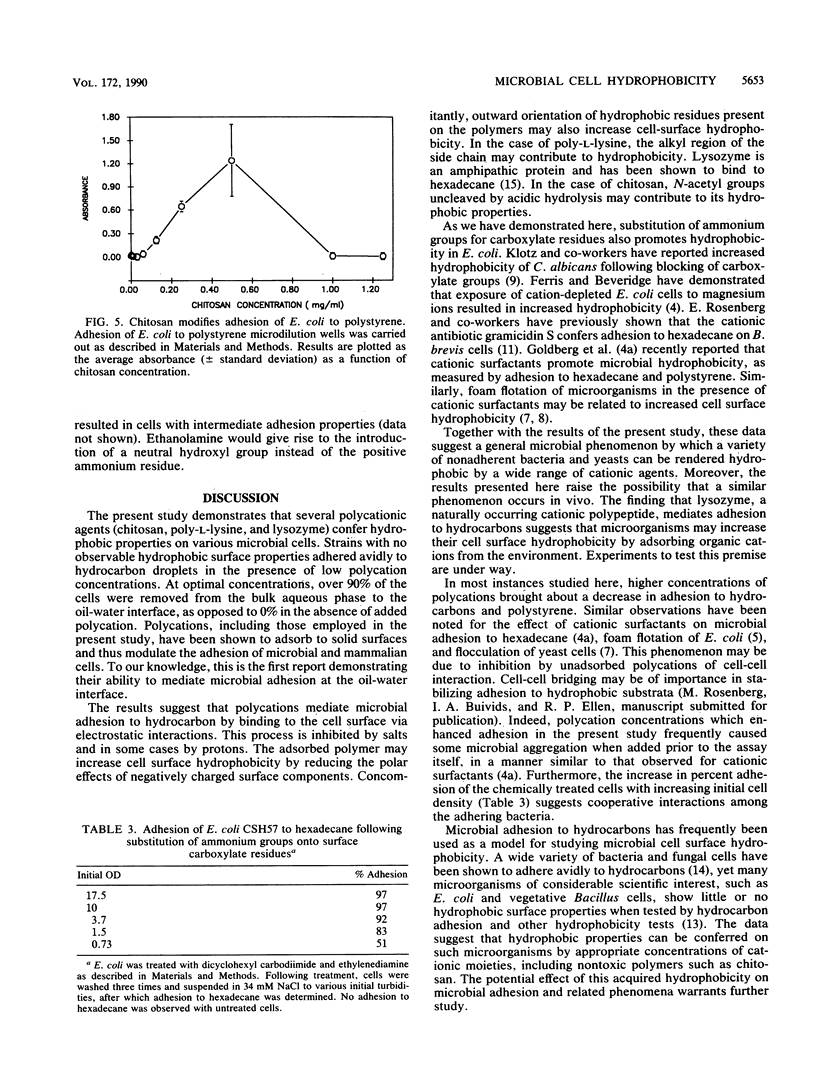
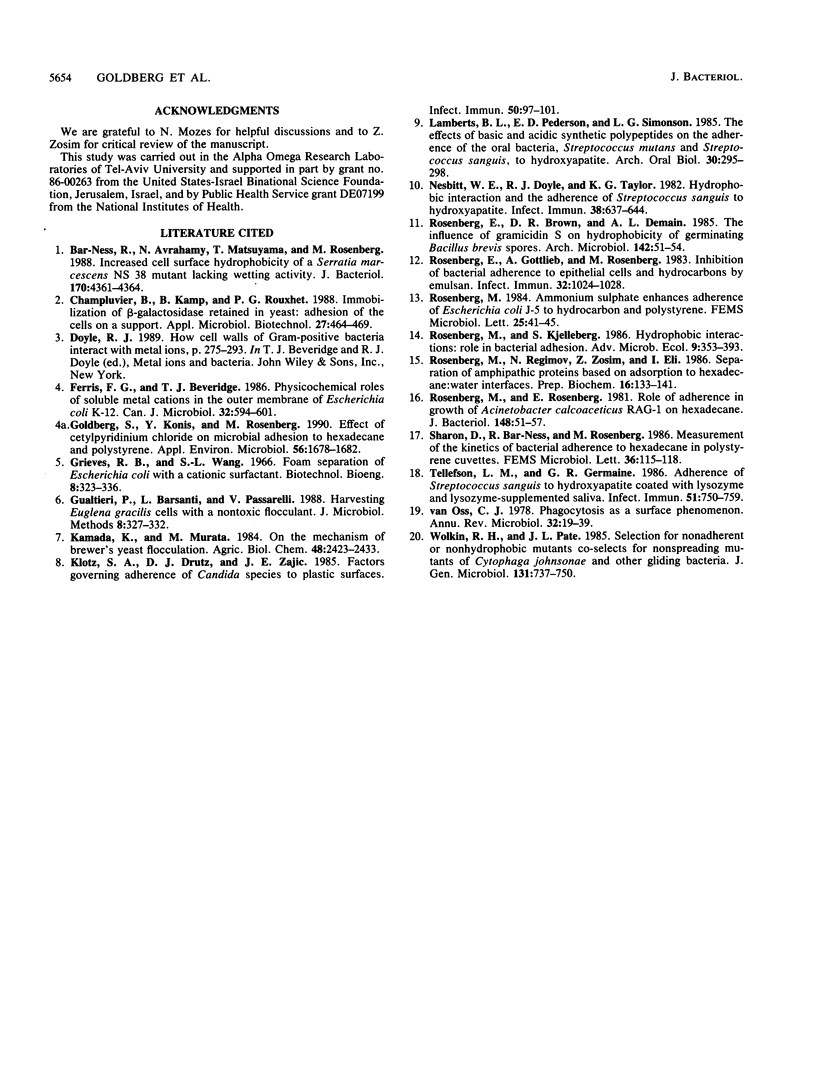
Selected References
These references are in PubMed. This may not be the complete list of references from this article.
- Bar-Ness R., Avrahamy N., Matsuyama T., Rosenberg M. Increased cell surface hydrophobicity of a Serratia marcescens NS 38 mutant lacking wetting activity. J Bacteriol. 1988 Sep;170(9):4361–4364. doi: 10.1128/jb.170.9.4361-4364.1988. [DOI] [PMC free article] [PubMed] [Google Scholar]
- Ferris F. G., Beveridge T. J. Physicochemical roles of soluble metal cations in the outer membrane of Escherichia coli K-12. Can J Microbiol. 1986 Jul;32(7):594–601. doi: 10.1139/m86-110. [DOI] [PubMed] [Google Scholar]
- Goldberg S., Konis Y., Rosenberg M. Effect of cetylpyridinium chloride on microbial adhesion to hexadecane and polystyrene. Appl Environ Microbiol. 1990 Jun;56(6):1678–1682. doi: 10.1128/aem.56.6.1678-1682.1990. [DOI] [PMC free article] [PubMed] [Google Scholar]
- Klotz S. A., Drutz D. J., Zajic J. E. Factors governing adherence of Candida species to plastic surfaces. Infect Immun. 1985 Oct;50(1):97–101. doi: 10.1128/iai.50.1.97-101.1985. [DOI] [PMC free article] [PubMed] [Google Scholar]
- Lamberts B. L., Pederson E. D., Simonson L. G. The effects of basic and acidic synthetic polypeptides on the adherence of the oral bacteria, Streptococcus mutans and Streptococcus sanguis, to hydroxyapatite. Arch Oral Biol. 1985;30(3):295–298. doi: 10.1016/0003-9969(85)90048-2. [DOI] [PubMed] [Google Scholar]
- Nesbitt W. E., Doyle R. J., Taylor K. G. Hydrophobic interactions and the adherence of Streptococcus sanguis to hydroxylapatite. Infect Immun. 1982 Nov;38(2):637–644. doi: 10.1128/iai.38.2.637-644.1982. [DOI] [PMC free article] [PubMed] [Google Scholar]
- Rosenberg E., Gottlieb A., Rosenberg M. Inhibition of bacterial adherence to hydrocarbons and epithelial cells by emulsan. Infect Immun. 1983 Mar;39(3):1024–1028. doi: 10.1128/iai.39.3.1024-1028.1983. [DOI] [PMC free article] [PubMed] [Google Scholar]
- Rosenberg M., Rosenberg E. Role of adherence in growth of Acinetobacter calcoaceticus RAG-1 on hexadecane. J Bacteriol. 1981 Oct;148(1):51–57. doi: 10.1128/jb.148.1.51-57.1981. [DOI] [PMC free article] [PubMed] [Google Scholar]
- Rosenberg M., Zosim Z., Regimov N., Eli I. Separation of amphipathic proteins based on adsorption to hexadecane:water interfaces. Prep Biochem. 1986;16(2):133–141. doi: 10.1080/10826068608062275. [DOI] [PubMed] [Google Scholar]
- Tellefson L. M., Germaine G. R. Adherence of Streptococcus sanguis to hydroxyapatite coated with lysozyme and lysozyme-supplemented saliva. Infect Immun. 1986 Mar;51(3):750–759. doi: 10.1128/iai.51.3.750-759.1986. [DOI] [PMC free article] [PubMed] [Google Scholar]
- van Oss C. J. Phagocytosis as a surface phenomenon. Annu Rev Microbiol. 1978;32:19–39. doi: 10.1146/annurev.mi.32.100178.000315. [DOI] [PubMed] [Google Scholar]


